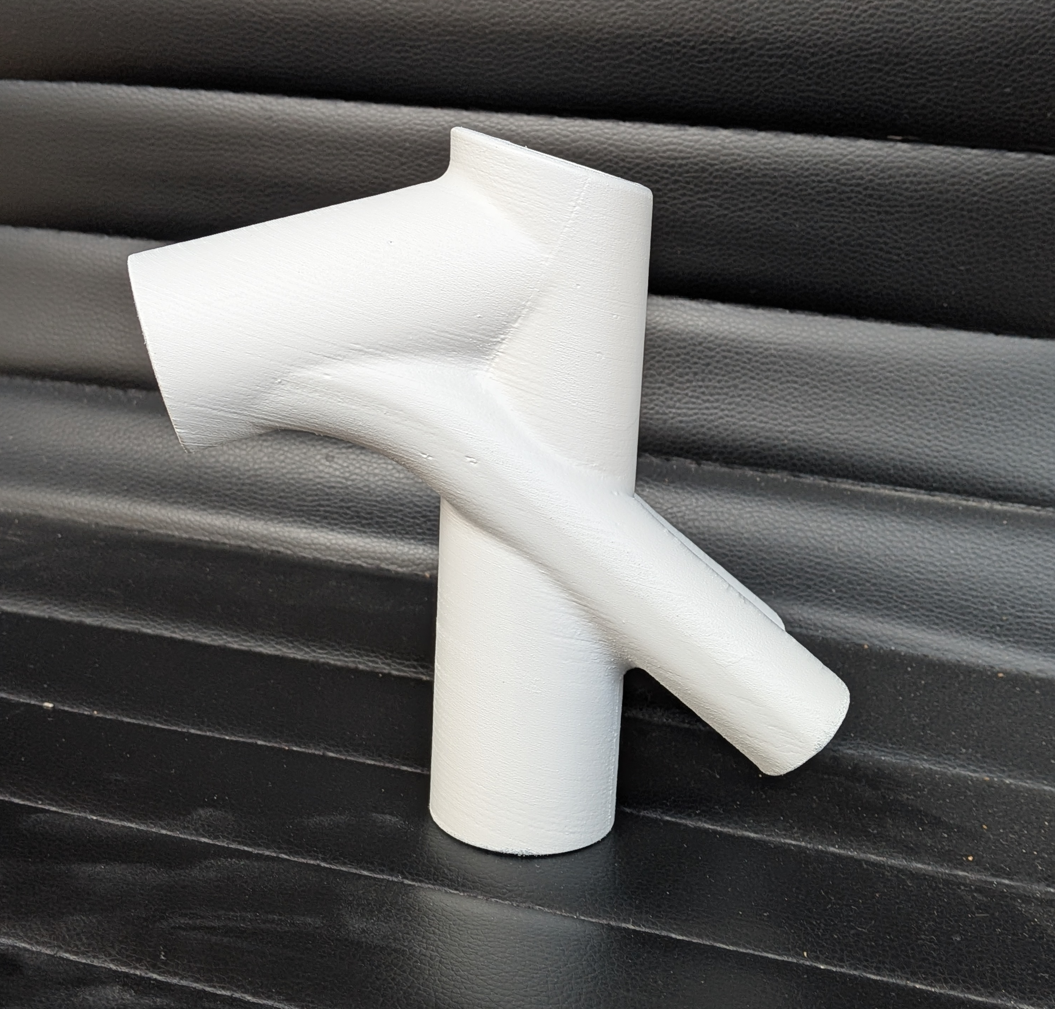Today wasn’t exactly a productivity powerhouse. Probably not the most exciting devlog entry either, but consistency matters — so here we are.
The morning was spent measuring stuff for another project (details skipped for now). After that, I rushed to the office to get back to this project.
Just for fun — and aesthetics — I’ve started painting one of the parts. First step: filler + sanding. One round down, many more to go until things are nice and smooth. I’m still undecided if painting is the way to go, since it adds a ton of extra work when building a frame. But hey, it’s worth a shot. One lug in particular has a pretty gnarly overhang, and filling it makes the layers way less visible.
 Next up: I want to reprint the last model so I have a second sample to work on. Today’s goal is making small tweaks and preparing for that.
Next up: I want to reprint the last model so I have a second sample to work on. Today’s goal is making small tweaks and preparing for that.
Some thoughts:
Whenever you mention 3D-printed lugs, the first reaction is usually: “But steel is so much stronger!” And yes, in raw numbers, that’s true. But strength alone doesn’t tell the whole story. With the right geometry and design approach, PA12-CF (carbon-fiber–reinforced nylon-12) can hold its own surprisingly well.
Numbers in context
- Steel lugs (Tange fork crown): UTS ≈ 1250 MPa
- Reynolds 853 tubing: UTS ≈ 1100 MPa
- High-end steels: up to 2000 MPa
- PA12-CF (FDM, XY): 140–155 MPa (after annealing) Design with thicker walls and broader load paths, and the gap shrinks dramatically.
How it compares to carbon frames
Carbon frames use continuous fiber laminates, reaching insane numbers (500–1000+ MPa). PA12-CF, with short chopped fibers (15–35%), won’t match that. What it does offer: printability, repeatability, and accessibility in a workshop.
Why PA12-CF could work
- Geometry wins → thicker sections, wider load paths.
- Hybrid reinforcement → metal bushings/bolts handle clamping loads.
- Annealing boost → heating at 140–150 °C increases crystallinity and strength.
Reflection
Steel and carbon will always win in the raw numbers game. But this project isn’t about maxing out MPa. It’s about creating a system where material, geometry, and process all work together. And in that sense, PA12-CF might just be the right material for 3D-printed lugs.